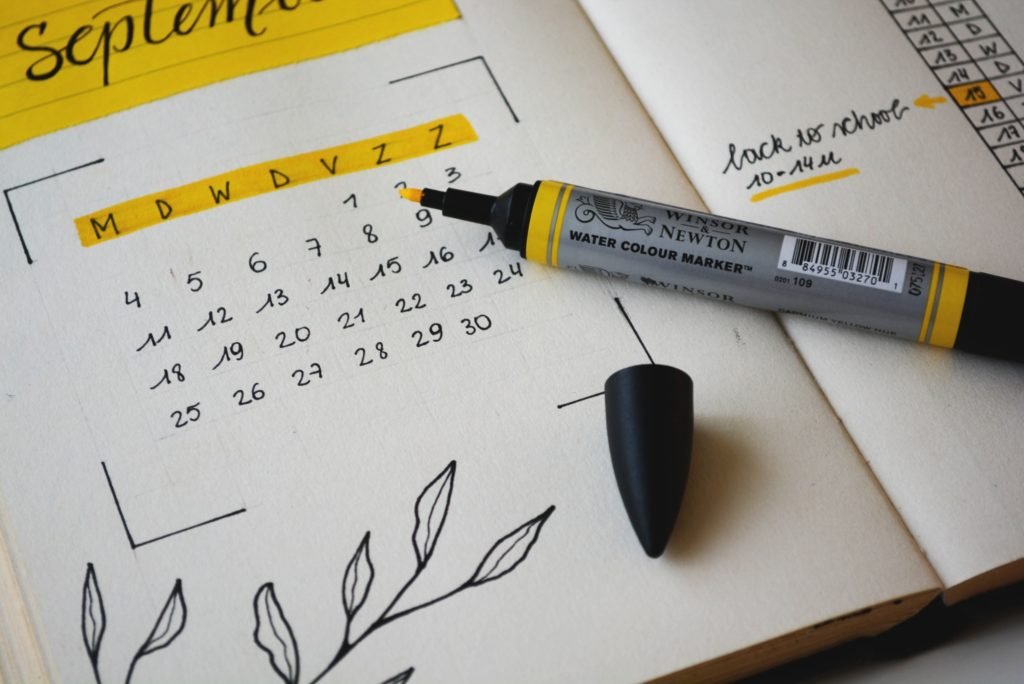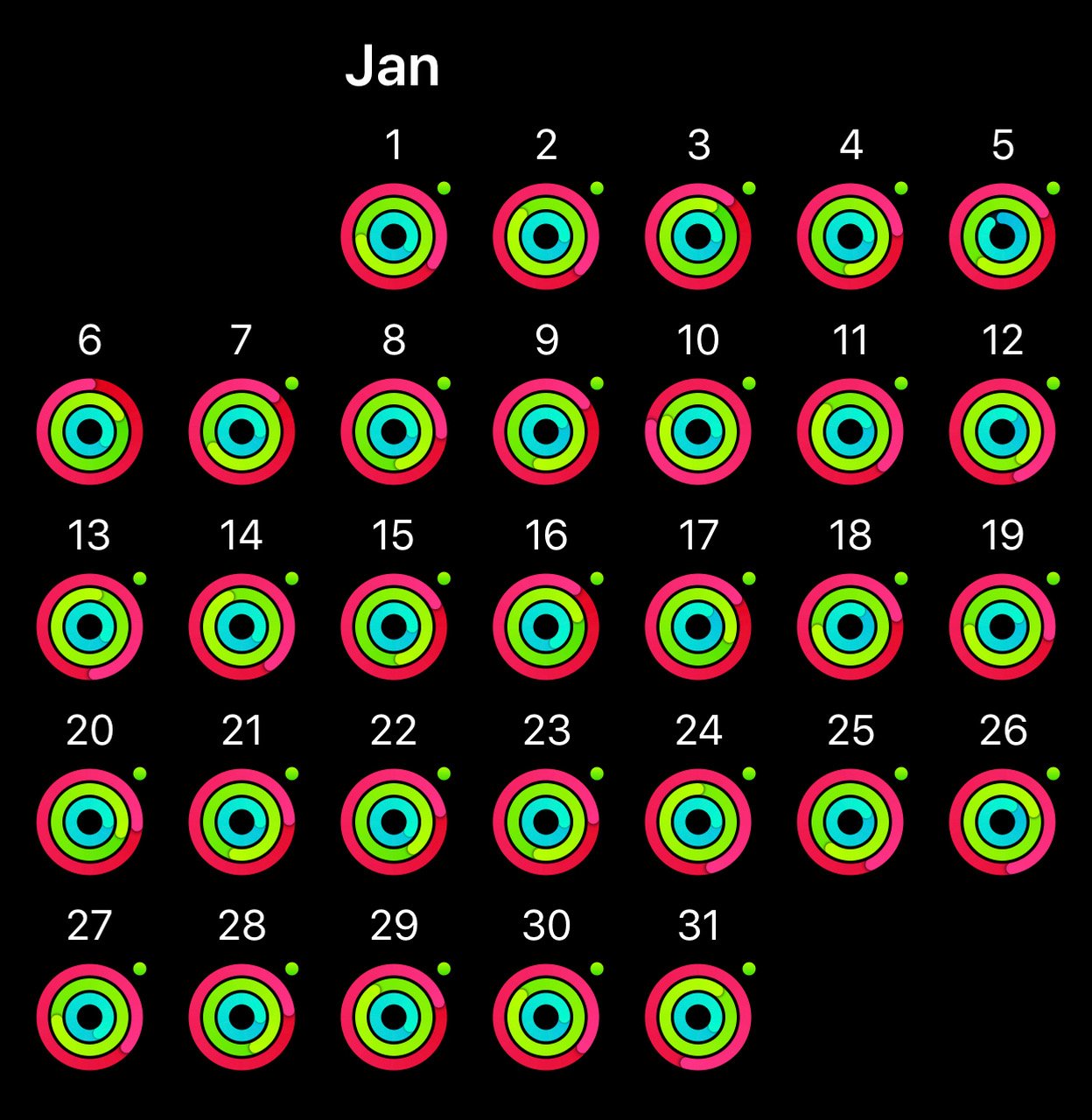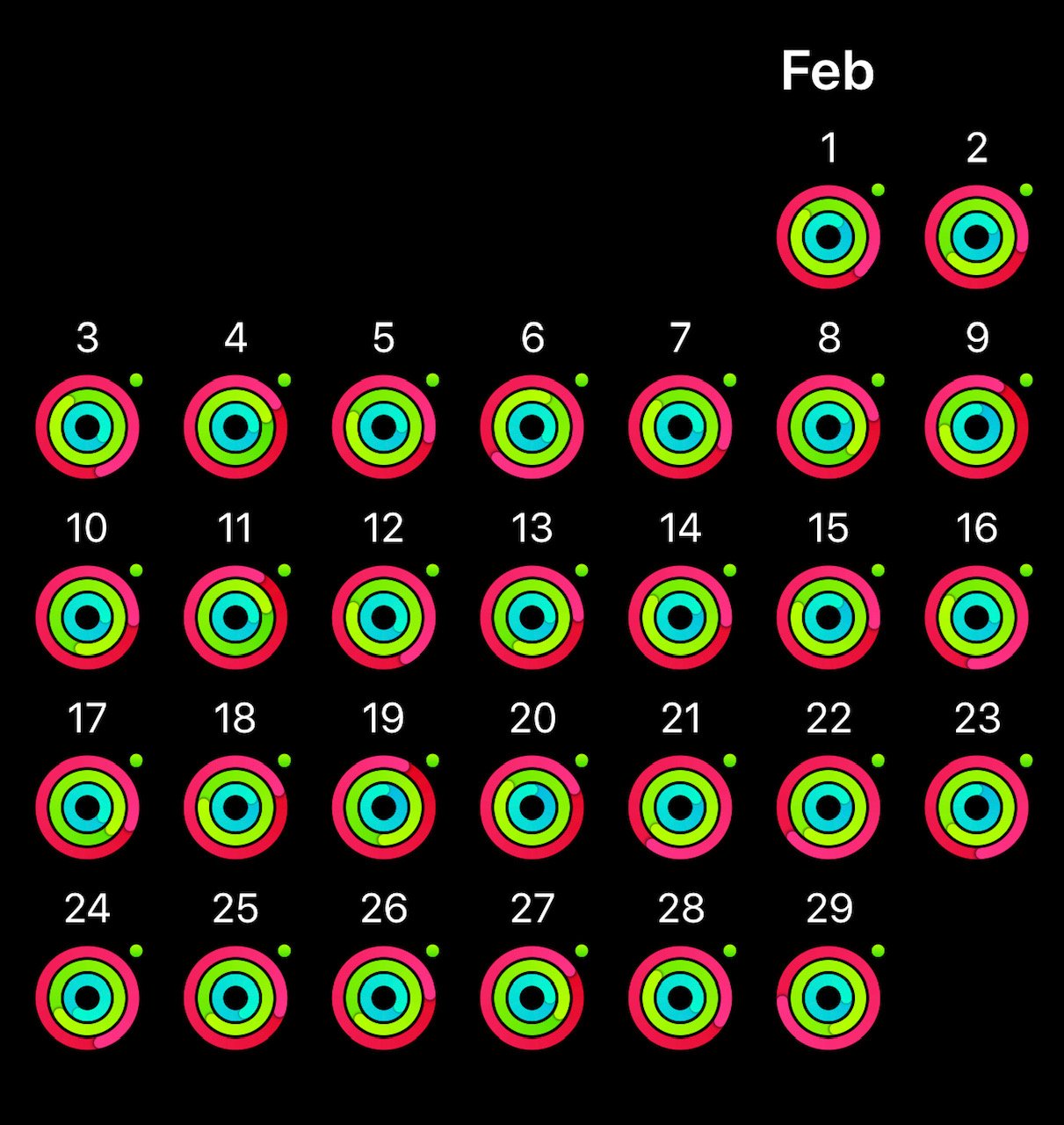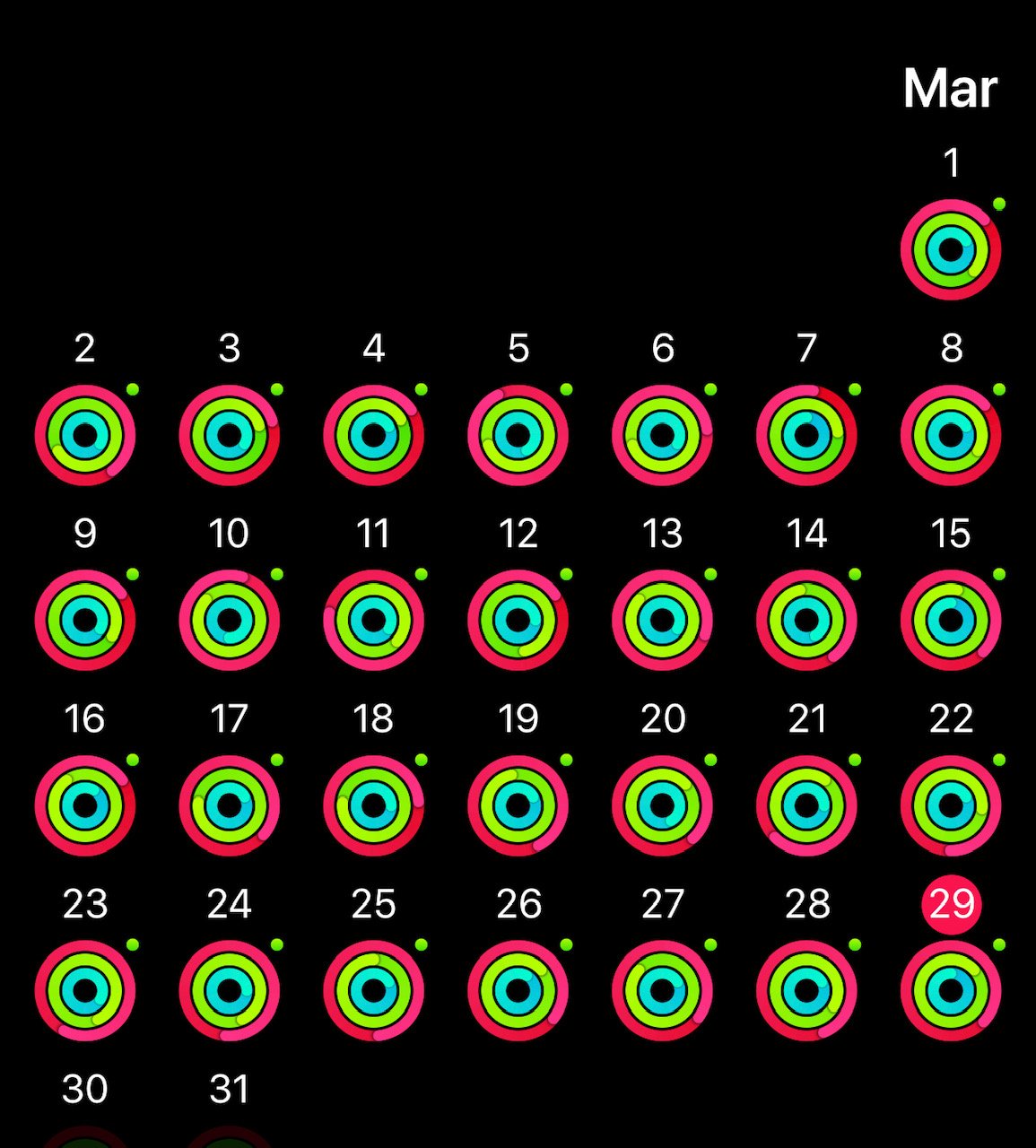The first quarter of 2020 is almost done. One of my New Year’s resolutions was to complete a month-long streak of closing all 3 rings every day on my Apple Watch Activity tracker. For those not familiar with the concept, this involves a “Stand” goal (at least some movement every hour) for 12 hours a day, an active exercise goal of 30 minutes daily and a Move goal that I set for roughly the equivalent of 15000 steps daily. Just to be clear, this wasn’t my first attempt at creating a 3-ring streak. I had tried it a few times in the past but never managed to exceed a 10-day continuous streak. Of course, I had a totally justifiable reason each time for why I broke the streak.
I started in earnest again, as you do with New Year’s resolutions, on New Year’s Eve. This time, however, I worked on creating a “Habit” instead of a “Goal”. And the results blew my mind. I’ve closed all 3 rings daily in 2020 so far. That’s Every. Single. Day. For 90 days now. Not bad, right? I’m a sucker for symmetry and pretty dashboards – hard to beat this one.
I figured it’s time to review all this anecdotal data based on my experiments with habit formation and hopefully glean some pointers on what worked this time while other equally desirable goals in the past did not. In short, finding out what the tipping point is that turns a goal into a habit. Hopefully, this learning can be translated into other areas of my life in need of help (to put it mildly).
What’s the key difference between a goal and a habit? Goals end when the finish line is crossed. Habits continue until consciously replaced or eliminated (and unfortunately sometimes with a lot more effort). Completing a marathon is a goal. Running 30 miles every week is a habit. Publishing a book is a goal. Writing 5000 words a week is a habit.
Scientifically speaking, there are observable differences between goals and habits. Goals are usually driven by rewards. In other words, a goal is a behavior or action motivated by the expectation of a reward. Take away the reward and the goal will cease. This is why it’s hard to have continually goal-directed behavior in the long term. Constantly looking for new goals can become tiresome.
Habit is as an action that you complete at a regular frequency, without too much thought or resistance. Unlike goals, a habit is simply a repeated response to a known stimulus without expectation of a reward. In other words, if the stimulus is invoked, the habit will occur. When you establish intentional and good habits you can achieve all sorts of goals, even lofty ones, as a matter of course.
The science behind habit formation is evolving rapidly. For most of the 20th century, it was thought that learning occurred primarily in the cortical regions of the brain (mammalian brain) and with enough training, when these actions become “automatic” aka ‘habits’, they shift to the subcortical regions of the brain including the basal ganglia/limbic system. However, newer research suggests that ‘Striatum’ (areas within the basal ganglia) are also involved in initial learning and habit formation. These theories have a lot of promise and consequences in terms of how and what we can do with habit modification. While the neural pathways for behavior-learning and habit formation are still being explored, we at least have consensus on what translates a learning action into an automatic one.
There is a point when a behavior changes from being reward-oriented to stimulus-oriented. This usually involves an extended period of repeated learning what we generally refer to as “Practice”.
My ‘’goal’’ at the beginning of the year was to close all 3 rings on my watch for a month. My “reward” was a series of consistent 3-ring circles on my Apple watch. (Yes, that’s all I wanted for a reward. I’m fairly low maintenance and easy to please). As the rings closed every night, I uttered a quiet but euphoric ‘woohoo’ to myself. Then, somewhere along the way, I just knew that the closed rings were bound to happen. That’s because the increased, and more importantly, consistent level of daily activity became my new baseline. Taking the stairs whenever possible, getting around 15000 steps daily is just what I do now. Regardless of whether my Apple watch tracks my activity or not, my body has now adapted to a consistently more active lifestyle which isn’t, in the conventional sense, reward-driven anymore. The action is now its own reward, or in others words a Habit.
I’m convinced now, more than ever, that there are no set number of days for a goal-oriented behavior to turn into a habit. I have heard everything from 21 days to 154 days. The right answer, disappointingly for many of us (because we like nice and simple numbers), is the cop out one – “it depends”. On so many factors such as how difficult the goal is, what the baseline was prior to starting, what else you have going on in life etc.
In my example, the first 45 or so days were the hardest. An overactive internal monologue kept trying to talk me out of stepping outside my comfort zone. Day after day. We’ve all been there. Pushing through that wall required a system in place. This system consists of the steps outlined below. I believe, if we can honor these guidelines, any desirable habit is achievable.
- One habit: Try to develop just one new habit at a time. We all have limited willpower. We are evolutionary wired to reduce unnecessary risk-taking. Stepping outside our comfort zone is interpreted by our brains as “risky” behavior. You’ll end up self-sabotaging if you try developing multiple new habits at once.
- Schedule early: Get it over and done with soon. Schedule your day accordingly to get the desired activity done early. Personally, I particularly detest pressure hanging over my head. I for one would liken it to a gray cloud. Gloomy, depressing, and most of all, persistent.
- Schedule consistently: Consistency is the key and perhaps the most important step to habit formation. Schedule the action to occur at a regular frequency. Set the activity in stone. Make it a non-negotiable part of your day. No matter what else happens or does not happen, make sure you check this one off.
- Cue it up: Find a stimulus that will always trigger the desired response. For instance, if you want to develop the habit of flossing teeth before bed, set up a cue such as turning on the bedside lamp as a trigger to reach for dental floss.
- Reward: Reward yourself, at least, in the short term. Just be careful to choose a reward that’s not counter-intuitive with the habit. Rewarding yourself with a donut each time after running 5 miles kind of defeats the purpose.
- Limit analysis: Limit other decision making around the action. Don’t fall in to the trap of deciding on your running attire, warm weather gear, music etc. just before you go running. Every little decision you have to make before engaging in the action just gives your brain another opportunity to hold you back.
- Be reasonable: Please set a reasonable goal. It needs to be challenging enough to get you outside the comfort zone but at the same time in the realm of possibility. For example, aiming to go from being a couch potato who’s never run to qualifying for the Boston marathon in 3 months isn’t going to fly. I’m sure there are some that are capable of such feats. But most of us are just setting ourselves up for failure.
- Avoid setback clusters: Don’t let setbacks cluster. Here’s what I mean by this. One day of a missed workout because of an unforeseen emergency is okay. But more than two days in a row is the start of a “setback cluster”. The cluster starts to gain momentum very quickly and unless broken soon, you’ll find yourself at square one again. I’ve been there too often!
There are so many noteworthy books on Habits. They are worth reading. However, knowing can never equal doing. And the only way to achievement is through focused, consistent and effortful doing. That’s how good lifelong habits are formed. What are you getting started on today?
Citations:
Yin, Henry H, and Barbara J Knowlton. “The Role of the Basal Ganglia in Habit Formation.” Nature Reviews Neuroscience, 1 June 2006, www.nature.com/articles/nrn1919#.
Ashby, F Gregory et al. “Cortical and basal ganglia contributions to habit learning and automaticity.” Trends in cognitive sciences vol. 14,5 (2010): 208-15. doi:10.1016/j.tics.2010.02.001





On point! Great insights!
Thank you Anup for taking the time to read
Awesome Aruna, very inspiring. So true. Start with few habits that we can follow & it becomes part of routine. 👍
Really enjoyed reading this one, the clarity, understanding and explanation is point on. Good work, very inspiring as well, now if I can just get going, you know, a beginning, and maybe a follow through. As always, pleasure to read. Thanks.
Thank you Div. Much appreciated.